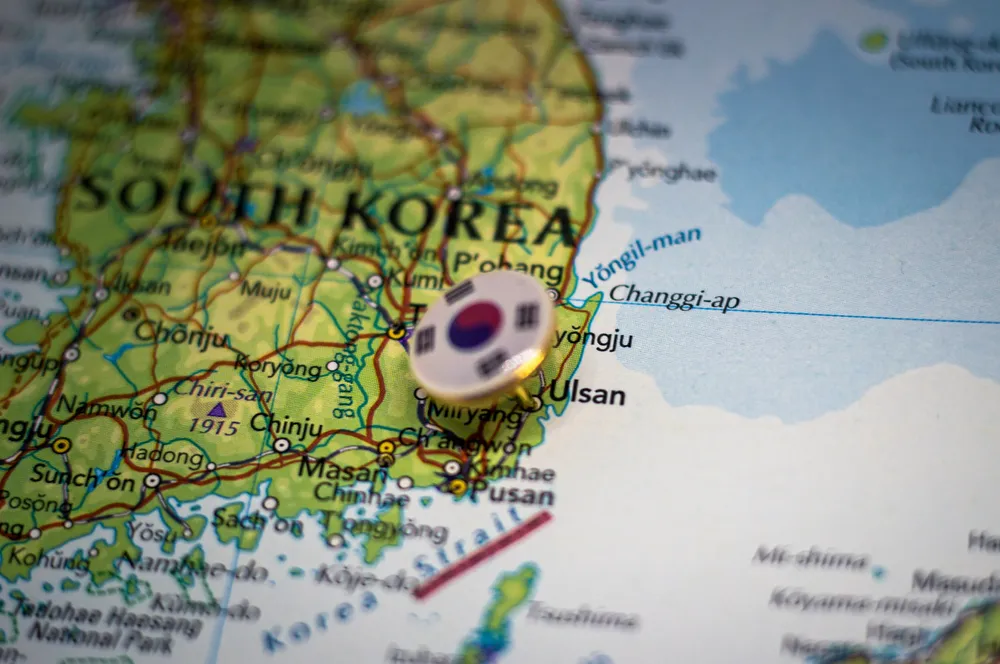South Korea resets bidding criteria as ambitious offshore wind push relaunches
Nation has committed to offer 7-8GW in offshore wind tenders during a two year period

South Korea has bolstered the non-price or ‘qualitative’ element of the bidding criteria to be used in its revamped offshore wind tender scheme, while promising to offer up to 8GW of capacity over the next two years.
South Korea’s Ministry of Trade, Industry and Energy (MOTIE) announced the changes this week after staging a high-level offshore wind meeting at the Korea Chamber of Commerce and Industry, chaired by Second Vice Minister Choi Nam-ho.
A new competitive bidding roadmap for offshore wind included a new weighting for non-price factors in competitive bidding for offshore wind power, increasing from 40 points to 50.
The MOTIE statement described the roadmap as contributing to the expansion of renewable energy distribution while strengthening the supply chain.
South Korea is gearing up for a massive expansion in offshore wind, and some of its leading companies in shipbuilding and offshore contracting have been forging partnerships with international offshore wind developers and technology suppliers.
The offshore fabrication and shipbuilding giant has been working closely with Equinor in recent months as the Norwegian oil major prepares to bid in an offtake tender expected at the end of this year and has now signed an exclusive supply agreement for Bandibuli.
South Korean media has spent several months predicting changes in bidding criteria and attributing these moves, at least in part, to concerns about the perceived threat posed to a nascent domestic offshore wind industry by low cost competition from China.
The South Korean roadmap introduces new elements among the non-price indicators, possibly reflecting these concerns about the potential dominance of low-cost foreign equipment in the domestic market.
New categories such as maintenance, security, and public works were included among the evaluation criteria, the ministry stated.
Under the previous system, introduced for wind tenders in 2022, the successful bidder was determined by combining price and non-price evaluation on 60-40 points split.
A score for "resident acceptance" will be lowered from eight points to four.
Revamped schedule
The roadmap also changed the timing of South Korea’s annual offshore wind tenders to to the second quarter of each year, rather in the fourth quarter, as previously.
Notice of additional tenders may be released in the fourth quarter if needed, the MOTIE statement added.
Plans to launch a wind power tender for competitive bidding this October, preceded by a tender briefing in September, remain intact.
The backdrop to these changes is South Korea's plan to expand its wind capacity to 18.3GW by 2030, relying mainly on offshore projects.
"Offshore wind power, along with solar power, is expected to be a significant source of renewable energy in the country," the MOTIE statement read.
"To achieve carbon neutrality by 2050, renewable energy must be significantly expanded, and offshore wind power is expected to play a larger role due to the limited development sites on land."
The South Korean government has now committed to launch 7–8GW worth of offshore wind power tenders over the next two years, with up to 5GW of fixed bottom wind and 3GW of floating targeted.
A new competitive tender process for floating wind turbine projects will run alongside the existing process for fixed-bottom.
A target ratio on public-sector participation will be proposed and the government plans to launch a public-led bid market by the first half of 2025.
The government is expected to provide more clarity on what public sector procurement requirements will be introduced.
Vice minister Choe said he expected the roadmap to help accelerate large-scale investments in offshore wind power and job creation across domestic and overseas firms, while also spurring the establishment of ports and ships and other related infrastructure.
"This is good news for developers which have been dealing with the uncertainty of advancing projects through South Korea's open-door permitting system. A healthy pipeline of secured capacity will also likely be beneficial for the local supply chain, enabling investment in facilities with the knowledge that firm orders are likely coming," Peter Lloyd-Williams, senior wind energy analyst at Westwood Global Energy Group, wrote in a LinkedIn post today.
(Copyright)